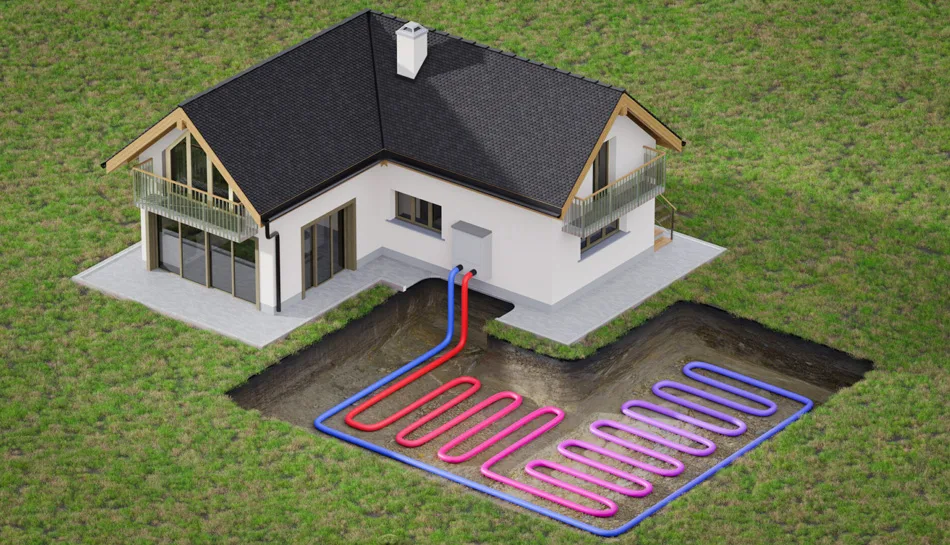Air-to-water heat pump is a very efficient and environmentally friendly heating and cooling equipment, and now more and more homes and commercial places are using it for heating and cooling. It is vital to install it correctly and maintain it regularly so that it can be used for a long period with excellent performance. Below, we will introduce the installation steps of the air-to-water heat pump, how to make the system run efficiently, and why it’s important to find a professional service.
For air-to-water heat pumps to operate efficiently and stably, correct installation is a prerequisite. Installation of an air-to-water heat pump requires professional knowledge, below we introduce the installation process of air-to-water heat pump in detail.
First, select the location of the device installation, this step is crucial. In general, heat pumps need to be installed in well-ventilated and unobtrusive outdoors, which can ensure smooth air circulation without affecting heat evacuation. Also, if you want to reduce the noise level as much as possible, it is best to install it away from the bedroom or quiet place.
Once the location is determined, the heat pump needs a strong base to ensure that it won’t tilt or shift because of vibrations from the ground or uneven surfaces. There are also drainage concerns to take into account. Condensed water may be produced while the heat pump is operating. In order to guarantee that condensate water may be released on time to prevent water buildup, a good drainage system should be set at the bottom of the equipment.

After the device is placed, connect the pipes and wires according to the manufacturer’s requirements. When connecting the heating system to the hot water pipe, the pipe should be sealed to ensure safety. If it is in a cold area, then it is necessary to increase anti-freeze measures to avoid freezing cracks in the pipe. Electrical wiring shall comply with local regulations and manufacturer requirements. Furthermore, to lower dangers, all electrical wiring needs to be properly grounded.
After installation, the heat pump needs to be fully commissioned and tested. Check that all connections and settings are correct, then start the device, and monitor performance indicators such as pressure, temperature, and power consumption to ensure that the expected performance indicators are met.
For the long-term stable and efficient operation of air-to-water heat pumps, regular maintenance and monitoring are important. Here are a few maintenance tips to help you keep your equipment in top condition and extend its service life.
Regular Cleaning and Maintenance: Without a doubt, this is the foundation of maintenance. It mainly cleans the two main components of the heat pump: the air filter and the heat exchanger. When dust and debris build up on these parts over time, the effectiveness of heat transfer can be affected. So they need to be cleaned regularly.
Refrigerant Pressure and Liquid Level Inspection: Refrigerant is the main heat transfer medium, and the stability of pressure and level will directly affect the heating and cooling effect. Therefore, check regularly to ensure that the refrigerant level and pressure are always within the manufacturer’s recommended range. If the pressure is found to be insufficient or unstable, it should be supplemented or adjusted in time.
Regular Inspection of Pipes and Joints: The most important steps in maintaining an air-to-water heat pump include regular inspections of the pipes and joints. This is because the main function of pipes and joints is to convey heat and fluid. Therefore, if they are damaged or leaked, this would lead to energy loss and reduce the efficiency of the whole system. Therefore, it is necessary to regularly check the pipes and joints to ensure that their connections are firmly and without problems.
Monitoring Operating Parameters: Most of the air-to-water heat pumps come equipped with modern monitoring features. This includes real-time monitoring of the operating status of the system, key operating parameters like temperature, pressure, and current. By monitoring these parameters, you are able to find and solve problems in time and avoid allowing small problems to become big ones.
Even though users can perform some basic maintenance, hiring professionals to maintain the air-to-water heat pump is still required to keep it stable and safe for an extended time. In addition to performing more intricate maintenance procedures like deep cleaning and part replacement, skilled technicians are also capable of using specific tools and techniques to diagnose faults and stop them from getting worse.
Professional services can also make the air-to-water heat pump last longer. Regular maintenance performed by qualified professionals can maintain the equipment operating smoothly, stop the equipment’s performance from degrading from prolonged use, and quickly identify and fix some worn and aging parts. This not only improves the reliability of the equipment, but also reduces the inconvenience and additional costs caused by failures.
The correct installation position, rigorous connection pipes, and regular maintenance inspections are all key to ensuring the long-term stable and efficient operation of the air-to-water heat pump. Only by doing these things well can the air-to-water heat pump truly play its energy-saving advantages and bring long-lasting comfort and convenience to your life.